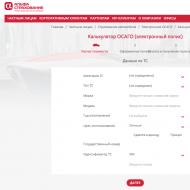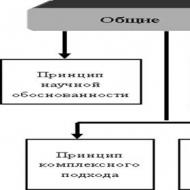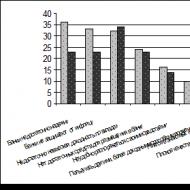
Types of use of non-residential premises. Target destination non-residential premises: types. Basic division of objects
In existing legislation Russian Federation There is no clear explanation of the Terminams "Target Purpose" and "Functional Purpose of the Room".
Reference! According to sub. 3 p. 36 of the block 3.5 of the procedure for conducting a single state register of real estate, approved by the Order of the Ministry of Economic Development of the Russian Federation of December 16, 2015 No. 943, there is a division of all rooms for two types: non-residential and residential.
EGRN provisions define types of permitted use of a specific object. Previously, the functional purpose of non-residential structure was necessarily indicated in project documentation. But at present, the law "On participation in share construction" dated December 30, 2004 No. 214-ФЗ no longer contains a compulsory requirement to make up information about the construction of information on the functional purpose of non-residential buildings that do not belong to the common property.
The Civil and Housing Code of the Russian Federation, also the FZ of the Russian Federation No. 218 dated July 13, 2015, provide for the main criteria for non-residential premises, which also meet the requirements for the residential structure, namely:
- The object must be immovable and isolated, its borders are the floor, ceiling, walls.
- Required entry into such a structure.
- The property is due to the fact that it is in the structure of the construction located on a certain land plot.
- It can also be in residential and non-residential buildings, but the premises itself should relate to the non-residential fund.
Translation into the category of non-residential premises in multi-storey house You can produce if this apartment is located on the 1st floor of the house. Also, an option is not excluded for the transfer of housing to the category of non-residential premises above the 1st floor. But this can be done if the room under the apartment does not fall under the category of residential.
The translation of the residential premises into non-residential is also possible and then when its technical condition does not allow in it to live. Legally, it is impossible to use real estate as non-residential, without changing its status and without changing the appointment. The premises are translated from one category to another without specifying a specific term.
The translation of residential premises to the non-residential category is impossible:
- if there are objections of one of the owners of this object;
- protective real estate is the subject of a mortgage agreement or burdened by the rights of third parties;
- the object is used by anyone as a place of permanent residence;
- if it is not available without the operation of other objects that give access to the premises of a residential type or simply there is no technical ability to make access exactly here.
About where to appeal to transfer residential real estate in a non-living and vice versa, which documents need to be prepared and in what cases can refuse to refuse, we told in detail.
Currently, in Russian legal practice, non-residential premises are often subject to legal relations. Despite the presence of some legal gaps in legislation in the use of non-residential buildings, it is necessary to comply with the norms of civil and housing codes of the Russian Federation, as well as other regulatory acts regulating legal relations in the field of use of real estate.
If you have found a mistake, please select the text fragment and click Ctrl + Enter..
The main features are as follows:
Classification by the types of permitted use
Non-residential premises can be used for any activity. If we take into account all types of permitted use, then all the premises are divided into the following types:
Auxiliary and basic
Reference! Auxiliary It is customary to consider the object used to operate or domestic service (lobby, pantry, staircase, corridor).
The mains consider the premises in which the processes of functional purpose are carried out. This includes premises, audiences and classes in state institutions, cabinets, chambers. There are also rooms here. common use, namely, cinemas, theaters, halls in museums, clubs, acts and reading rooms, administrative institutions, trading rooms.
How is the division of intended purpose?
Under the targeted purpose is aware of the activity, for the maintenance of which one or another room can be used. According to this sign, the room is classified on:

Functional Purpose of the Room - availability constructive features and technical characteristics that allow you to apply it as an independent object. The classification may be like this:
- Basic.
- Technical.
- Communication.
- Auxiliary.
- Serving.
Conclusion
In conclusion, it is worth noting that there is a lot non-residential premisesUse which can be used for different purposes. Their size is also very different. Such objects can be purchased to maintain their own business or for use for industrial purposes. Also, they can be rented by concluding an agreement with the owner. It is important to choose the right view of the room and make sure that it satisfies your needs and has everything you need for use in non-residential purposes.
Production facilities - View commercial real estatelocated in specially intended buildings and facilities. Such buildings are used to carry out work related to participation in various types of production, organizations, control and management of the enterprise.
Types of industrial premises
Industrial premises are generally divided into several groups: administrative, warehouse, as well as directly industrial. Also, this type of real estate can be classified in more detail: by appointment and industry.
Purpose:
- production premises - it is here that the whole cycle of work is performed, it may be a workshop at a factory or work plots;
- warehouses where various tools, equipment, raw materials and finished products are stored;
- administrative premises are the offices of managers, specialists, halls for meetings or trainings;
- sanitary and household premises are canteens, bathrooms, showers and dressing rooms.
- medical premises;
- facilities for food production;
- premises involved in the light industry industry;
- metal processing rooms;
- premises for the production of explosive, as well as combustible substances.
Industry:
It is worth noting that classifications can also be based on the form of waste, which are divided into wood, metal, refractory or combustible, as well as liquid or minor by weight and volume. In addition, noise level and possible contamination, illumination, presence of steam, water or gas supply, and electrical wiring are taken into account.
Any variety of production premises must comply with all hygienic standards. Thanks to this, employees will feel comfortable, and the quality of products will remain unchanged.
The main conditions that must be observed in the industrial premises are:
- Temperature, heating and cooling systems. It is important to maintain it within certain limits. This factor is especially important in the production of works associated with high or low temperatures: metalworking, food production. Ideally, the employee should be cool in the summer, and in winter warmth.
- Ventilation and air conditioning. It can be natural or artificial. The main thing is that employees easily breathe, and all unpleasant and harmful evaporation were quickly and effectively removed. For replacing, they should flow fresh air. It is important to clearly determine the direction of use of the premises, the number of people who will be constantly in these rooms, the level of humidity and dust. Taking into account these factors, the most optimal equipment is established.
- Illumination of industrial premises. The basic requirement is a sufficient amount of light to perform all the work. When choosing lighting, it is necessary to take into account the possibility of using natural light, taking into account the size of the premises and the location of the windows. Should also not forget about savings and effective use Energy.
- Energy saving. This applies to all carriers that can be used in the industrial premises. It is about gas, electricity, diesel fuel. It is also necessary to monitor compliance with security measures: all systems should be easy to operate.
- Water supply and sewage. Water supply is one of the most important elements in the production process. In addition, it is used not only for production, but also for personal needs of the personnel. In addition, the active water supply will help to cope with possible fire. Sewelation should also fully ensure all the needs of production and employees.
- Fire systems. They must fully comply with all the requirements of the relevant services. The type of fire-prevention systems directly depends on the type of production.
Selection of industrial premises
Any business begins with the search for the relevant premises. It is it that a certain extent guarantees the success of activities. The rental of industrial premises is in great demand. When choosing a room, you need to pay attention to the mass of factors.
Business specifics: What exactly will be made.
Constructive requirements for the building arising from the specifics of the production process: the width of the doorways, the height of the ceilings, the necessary communications, the presence of loading and unloading sites and elevators.
General requirements in manufacturing areas, taking into account possible growth.
Location of the building: the availability of access roads, transport accessibility, availability of parking spaces around the building.
The state of the building and internal communications.
Compliance of production premises by fire safety requirements, as well as the requirements of legislation in the field of health.
Terms and terms of rent.
The need to obtain additional permits and approvals for accommodation in this building of concrete production. In the event that such negotiations may be required - the timing and cost of their design.
All these components are essential, but the most attention to the selection of industrial premises should be paid to the building shell, internal systems of supply and additional elements that allow you to accommodate buildings and premises for specific production.
1. The building envelope includes the main elements, such as building frame, outdoor cladding, internal supporting structures. On average, the service life of such elements is up to 75 years. The shell must fully comply with the requirements for concrete production, since constructive changes require significant material costs and numerous approvals.
2. Internal security systems consist of fire-fighting systems, ventilation and air conditioning, heating, lighting, water and gas supply. The service life of such systems varies from 2 to 15 years. Constructive changes B. this case Possible, but work on their change is quite expensive.
3. Additional elements that include finishing work, sound insulation, partitions, lighting plants, furniture, fittings, telecommunication channels.
Separate groups of industrial premises are distinguished by the rental rate. Office premises are considered to be the most comfortable work, because the cost of their lease will be much higher than the price. square meter Warehouse. That is why some entrepreneurs want to save. They are renting a production room intended for another type of work. However, in reality, such actions are punishable.
Types of residential premises:
HOUSE
- Apartment building apartment
- Individual residential building
- blocked residential building
Type
Allocate residential buildings:
- residential building gallery type
- Housing Corridian Building
- residential building section
FLAT
- Flat
- Communal apartment
ROOM
View of the housing stock
Types of Housing Fund depending on the purpose of use:
- housing Foundation social use
- Specialized Housing Fund
- Individual Housing Fund
- Housing Fund for Commercial Use
Types of residential premises of a specialized housing
A comprehensive list of species of specialized residential premises installed in Article 92 of the LCD RF
Types of housing stock depending on the type of property of residential premises:
- Private Housing Fund
- State Housing Fund
- Municipal Housing Fund
Definition of the concept of "housing"
What is a residential premises?
Residential house An individual-specific building is recognized, which consists of rooms, as well as the premises of the auxiliary use intended to meet citizens of household and other needs associated with their accommodation in such a building.
Allocate multi-unit, individual, blocked residential buildings
Apartment house apartment - residential house in which apartments have common extracarty rooms and engineering systems ("Methodical manual for the maintenance and repair of the housing stock. MDC 2-04.2004" (approved. Gosstroke Russia).
Individual residential building - a separate residential building with the number of floors not more than three, intended for the residence of one family (an object of individual housing construction) (decision of the Council of Deputies of the Urban settlement Shakhovskaya MO of 10/29/2013 No. 10/62 (as amended from 10/28/2014) Approval of land use rules and buildings of the urban settlement Shakhovskaya Shakhovsky Municipal District of the Moscow Region ").
Individual residential building - a single-headed residential building, designed to accommodate one family and having a rival area (decision of the Council of Deputies of the City District Dzerzhinsky MO of 22.02.2012 N 5/2 (edited by 28.11.2012) "On the Regulations on the approval of land use and development rules municipal Education "City District Dzerzhinsky" Moscow Region ").
Blocked residential building: A building consisting of two apartments and more, each of which has directly access to outdoor territory (Order of the EMERCOM of Russia dated 04.24.2013 N 288 (as amended from 07/18/2013) "On approval of the CP of the SP 4.13130" "Fire protection system. Restricting the spread of fire on protection facilities. Requirements for volume and planning and constructive solutions"(Together with" SP 4.13130.2013. Code of Rules. Fire protection systems. Restriction of fire distribution at protection facilities. Requirements for volume-planning and constructive solutions ").
Blocked residential building - residential house with the number of floors not more than three, consisting of several blocks, the number of which does not exceed ten and each of which is intended to accommodate one family, has a common wall (common walls) without openings with a neighboring block or adjacent blocks, located on a separate unit Land plot and has an individual entry into the territory of general use (decision of the Council of Deputies of the Urban Settlement of Shakhovskaya MO of 10/29/2013 No. 10/62 (as amended from 10/28/2014) "On approval of land use rules and buildings of the city settlement Shakhovskaya Shakhovsky Municipal District of the Moscow Region" ).
Blocked residential building - apartment building building, consisting of two and more apartments, each of which has a direct access to the pillage (" Guidelines According to the protection of the rights of participants in the reconstruction of residential buildings of various forms of ownership "(approved by order of the Gosstroita of the Russian Federation of 10.11.1998 N 8).
By type, residential buildings are distinguished:
Gallery type residential building - The building in which apartments (or hostel rooms) have exits through a common gallery of at least two stairs ("Methodical recommendations for the protection of the rights of participants in the reconstruction of residential buildings of various forms of ownership"
(approved by order of the Gosstroy of the Russian Federation of 10.11.1998 N 8).
: A building in which all floor apartments have exits through a common corridor at least two staircases ("SP 4.13130.2013. Code of Rules. Fire protection systems. Restriction of fire distribution at protection facilities. Requirements for volume-planning and constructive solutions" (approved by the order of the Ministry of Emergency Situations of Russia dated 24.04.2013 N 288).
Corridian residential building - A building in which apartments (or hostel rooms) have exits to stairs through a common corridor ("Methodical recommendations for the protection of the rights of participants in the reconstruction of residential buildings of various forms of ownership" (approved by order of the Gosstroy of the Russian Federation of 10.11.1998 N 8).
: A building consisting of one or more sections separated from each other in the residential part building structures Without openings and having independent evacuation outputs ("SP 4.13130.2013. Code of Rules. Fire protection systems. Restriction of fire distribution at protection facilities. Requirements for volume-planning and constructive solutions" (approved by the order of the EMERCOM of Russia dated 04.24.2013 N 288) .
Sexual residential building - a building consisting of one or more sections ("Methodical recommendations for the protection of the rights of participants in the reconstruction of residential buildings of various forms of ownership" (approved by order of the Gosstroy of the Russian Federation of 10.11.1998 N 8).
Residential apartment
Definition of the concept of "apartment" is contained in part 3:
Apartment recognized structurally separate room in apartment house, ensuring the possibility of direct access to public premises in such a house and consisting of one or more rooms, as well as the premises of the auxiliary use intended to meet citizens of household and other needs associated with their accommodation in such a separate room.
Definitions of the concept of "apartment" in legislation
Residential apartment - Residential Rooms, Corridors, Halls, Kitchens, Bathrooms, Bathrooms, Storage Rooms, Internal Tambura, Front ("Methodological manual for the maintenance and repair of a housing stock. MDC 2-04.2004" (approved. Russian State).
Residential apartment - Isolated part of the building, intended for living one or more families.
Residential apartment in two levels - Apartment, residential and utility rooms of which are located in two adjacent floors and are connected by an intra-quarterly staircase ("Methodical recommendations for the protection of the rights of participants in the reconstruction of residential buildings of various forms of ownership" (approved by order of the Gosstroy of the Russian Federation of 10.11.1998 N 8)
Definition of the concept of "residential apartment" in literature:
Residential apartment - "A structurally separate complex functional part of a residential structure or non-residential building with residential premises, intended and administratively recognized as suitable for permanent residence of citizens, which has a separate entrance from the street or from a common site and does not have in its limits of functional parts (areas, volumes, volumes ) other apartments (common areas) "( Kichikhin A.N. Housing rights. Use and Property: Comments and Explanations / A.N. Kichikhin, I.B. Markovich, N.A. Shcherbakov; Ed. I.B. Markovich. M.: Lawyer, 1997. P. 94.)
Communal apartment
Communal apartment - an apartment consisting of several residential premises (rooms) belonging to two and more users and (or) owners who are not members of a single family on the basis of individual contracts, transactions, other actions provided for by law, jointly using auxiliary premises (common areas Apartments) and engineering equipment in public areas ("Methodical recommendations for the implementation of the Federal Financial Services of the State Fire Service of the Federal Fire Service social payments"(utensils. EMERCOM of Russia 23.07.2015 N 2-4-87-27-25).
Communal apartment - an apartment that provides direct access to public premises in an apartment building and public houses in an apartment, consisting of several residential premises (rooms), in which two or more users live and (or) owner who are not members of one family, The basis of individual contracts social Nama, hiring, gratuitous use concluded with the city of Moscow in the prescribed manner for individual residential premises in the apartment (rooms), or on the basis of ownership of individual residential premises in the apartment (rooms) (Art. 11 of the Law of Moscow of January 27, 2010 N 2 (asked by December 28, 2016) "Basics of Housing Policy of the City of Moscow").
Room
The definition of the concept of "room" is contained in part 4 of Article 16 of the Housing Code of the Russian Federation:
Room A part of a residential building or an apartment is recognized, intended for use as a place of direct residence of citizens in a residential building or apartment.
Living room: Residential premises for permanent accommodation in apartments, as well as temporary accommodation in hotels, boarding houses, holiday homes, campsites and other public building buildings ("SP 137.13330.2012. Code of Rules. Residential environment with planning elements available to disabled. Design rules" (approved by the order of the Gosstroy dated 27.12.2012 N 119 / GS).
Types of housing stock depending on the purpose of use
Types of Housing Fund depending on the type of ownership of residential premises
Housing Code of the Russian Federation allocated next species Housing Fund:
- private housing fund - a set of residential premises owned by citizens and owned legal entities;
- state Housing Foundation - a set of residential premises belonging to the right of ownership of the Russian Federation (Housing Fund of the Russian Federation), and residential premises belonging to the right of ownership to the subjects of the Russian Federation (Housing Fund of the Subjects of the Russian Federation);
- municipal Housing Foundation - A combination of residential premises belonging to the right of ownership to municipalities.
Residence and residential premises. Difference in concepts
The norms of a number of laws contain the concept of "housing", while the norms of the profile housing Code of the Russian Federation regulating just housing legal relations, this concept does not disclose, operating only by the concept of "residential premises".
Is there a difference in the concepts of "residential premises" and "dwelling" or can they be considered as identical?
- The concept of "residential premises" and "dwelling" in civil law
- The concept of "dwelling" in the practice of the European Court of Human Rights (ECHR)
- The concepts of "housing" and "residential premises" in the literature
- Determination of the concept of "housing" in law (in the Criminal Code of the Russian Federation and in the Criminal Code of the Russian Federation)
- Which of the definitions of the concepts of "dwelling" (given in the Criminal Code of the Russian Federation or in the Code of Criminal Procedure) should be applied in practice?
Nevertheless, there are a number of signs, in accordance with which you can identify such real estate.
Signs of non-residential facility:
Read more about the differences between the residential and non-residential premises, read.
Targeted use of real estate not intended to accommodate
Information about the purpose of the premises is made to the database at the time of the cadastral registration (According to paragraph 16, Ch.22 of Law 221-FZ dated July 24, 2007). A non-residential premises has its intended purpose - a type of activity for which this object is intended. The objectives of the use of non-residential premises are distinguished in this way:
- office;
- trade;
- sports;
- communal household;
- educational;
- medical;
- catering establishments;
- warehouse;
- free destination, etc.
Real estate objects not intended for accommodation are subject to another one - functional purpose. For this, the technical characteristics and features of the design are taken into account. In this aspect of the room there are:
- technical;
- auxiliary;
- communication;
- basic;
- serving.
Basic division of objects
The concept of the appointment of non-residential premises is not defined.. According to the order of the Ministry of Economic Development of the Russian Federation No. 943 of December 16, 2015. The procedure for the management of EGRN was approved. In block 3.5, paragraph 36, the underground of the document it is said that in the appointment of the premises are divided into residential and non-residential.
At the same time, the first are intended solely for one purpose - the residence of citizens. The second is classified by intended purpose in accordance with the type of permitted use in EGRN.
Important: A clear definition of the target may limit options for using a non-residential real estate object. This may be due to different standards of sanitary, fire-prevention and other requirements.
Responsibility for incorrect operation
The use of non-residential premises is not intended to entail administrative responsibility. So that avoid disputes and court proceedingsIt is necessary to bring in line with the documentary and actual appointment of real estate.
 Another significant point - non-residential premises are not intended for living. In the Housing Code of the Russian Federation in Art. 15 contain exhaustive requirements for residential premises. If at least one condition is not respected, it is impossible to live in the building or part of it.
Another significant point - non-residential premises are not intended for living. In the Housing Code of the Russian Federation in Art. 15 contain exhaustive requirements for residential premises. If at least one condition is not respected, it is impossible to live in the building or part of it.
The legislation of the Russian Federation does not include direct responsibility forBut there is a responsibility for violation of sanitary and epidemiological norms (by area, level of noise, layout, illumination, etc.).
Punishment for such an offense - a fine of 500 to 1000 rubles. For citizens, from 1000 to 2000 rubles. for officials, in the same size for FLP (or suspension of activities for a period of up to 90 days), from 10,000 to 20,000 rubles. Either suspending activities to 3 months for Jurlitz.
More information about the rules for using non-residential premises you will find in.
Classification of space and their characteristics
Free - What is it?
In order to expand the possible real estate utilities, you can give it the status of non-residential free destination. Such objects are operated by owners and tenants in different directions of activity, with the exception of specialized.
Important: Non-residential free destination has a wide functionality.
Special purpose real estate often becomes known even at the time of design, but for owner optimal option - creation of a universal structure. Such a building can be renewed at the request of the tenant. Often non-residential free destination are used as shopping centers, under offices, household or social enterprises.
Free destination, despite its multifunctionality, cannot be fully suitable for all areas of activity. Given the specifics of the work of the institution, in some cases additional documentary approvals will be required.
Residential
 According to law No. 218-FZ, Article 8, Ch.5, P.9, 10, 11 in EGRN, includes additional information on the designation of the building, premises, about its name. When setting on cadastral records, only the main information about real estate changes regarding the change of destination should be guided Housing Code RF (GL.4). It's important that changing the appointment of the premises in the building does not entail changes in the establishment of the building itself (for example, room residential, non-residential building).
According to law No. 218-FZ, Article 8, Ch.5, P.9, 10, 11 in EGRN, includes additional information on the designation of the building, premises, about its name. When setting on cadastral records, only the main information about real estate changes regarding the change of destination should be guided Housing Code RF (GL.4). It's important that changing the appointment of the premises in the building does not entail changes in the establishment of the building itself (for example, room residential, non-residential building).
In this regard, the Commissioners state bodies Direct information about changing the appointment of non-residential premises to include such information in the registry (Law No. 218-FZ, Article 32, Part 1).
Read more about the classification of non-residential premises, read.
Instructions for changing functional prescription
Change the purpose of the property, as well as a tenant in coordination with the owner, there are two options, how to change the purpose of non-residential premises:
- Transfer of an object in the residential (accordingly chapter 3 LCD RF).
- Change of activity.
The main stages of reprofilating the room:
- project preparation;
- coordination with the city services (Gorodokanal, SES, Ministry of Emergency Situations, etc.);
- preparation of documents and providing them with authorized state management bodies;
- work, relevant project documentation and commissioning of the building;
- registration technical passport representative of BTI;
- obtaining a new cadastral passport;
- appeal to the registration authority for a new certificate of ownership.
Where to contact
 Whatever the direction of the work, it will be necessary to agree with Mrs.. For this it is worth contacting the district office of the fire inspection. To confirm compliance with sanitary and epidemiological standards, you need to get permission from Rospotrebnadzor. BTI will prepare space plans that are located below and above the object.
Whatever the direction of the work, it will be necessary to agree with Mrs.. For this it is worth contacting the district office of the fire inspection. To confirm compliance with sanitary and epidemiological standards, you need to get permission from Rospotrebnadzor. BTI will prepare space plans that are located below and above the object.
Documentation together with the statement of the owner is submitted to the district prefecture. After accepting a positive decision, the owner turns to the USRP, where the new registration of the premises is carried out.
If necessary, these issues are engaged in local governments, in large cities - territorial administrations, in small - district authorities.
Project preparation and coordination
Before contacting the project office, find out the condition of the supporting structures, floors, wiring, water supply systems, and whether redevelopment is possible in this structure. Having the necessary documentation and the results of the preliminary, you can proceed to the preparation of the project.
If necessary, additional sections may be included in the document.:
- constructive decisions;
- project facade;
- heating, ventilation;
- water disposal and water supply, etc.
Project preparation is the most difficult and responsible stage. Coordination occurs in the following order:
- With zeliginal.
- Fire supervision.
- Sanitary and epidemiological supervision.
- Expert Bureau.
- The architecture department (if the facade of the building is affected).
Preparation of documents
 To change the destination of the room you need to prepare such documents:
To change the destination of the room you need to prepare such documents:
- statement;
- guideline documentation;
- technical plan (about what the technical plan differs from the technical passport, read);
- explication;
- redevelopment project;
- certificates from the BTI of the technical condition, inventory value;
- certificate of the absence of municipal debts.
Getting permission
After submitting documents local organs The authorities are studying the object and consider the possibility of recruitment for up to six days. If a positive decision is made, the applicant is issued a permit with an unlimited period of action. If any violations are revealed, a period of 10 days is given to eliminate them, after which the application is re-examined.
Financial costs
The main financial spending are directed to:
- Preparation of project documentation.
- Payment for housing services.
- Covering the cost of construction work.
- Payment of state duty.
The amount of expenses will be varied depending on the region. So, in Moscow, the approximate cost of the project will be 150 rubles. For 1 sq.m. premises. In remote regions, a ready-made document may cost 60000-70000 rubles.
The estimated price for services in Moscow and the region is:
- preparation technical conclusion - 25000 rubles;
- project preparation - 130,000 rubles;
- payment of BTI services - 60000 rubles;
- the work of the architecture department is 30000 rubles;
- amendments to documents - 45000 rubles.
Timing
 As a normal order, 1-2 days is treated for technical conclusion. Depending on the complexity, the project is preparing from several days to two months.
As a normal order, 1-2 days is treated for technical conclusion. Depending on the complexity, the project is preparing from several days to two months.
The preparation of the Help of BTI and the challenge of a specialist on average leaves 10 to 30 days. Working with the architect takes up to two weeks, and making changes to the documentation - no more than 30 days.
Making changes to the cadastral plan
Changes to cadastral documentation are made on the basis of a technical plan with a drawing and description of the main parameters of the object. This procedure can take from three to eighteen days depending on the complexity and scale of changes. The result becomes a decorated cadastral passport with an updated object layout.
A non-residential premises has its purpose, in accordance with which is used. If the owner or tenant decides to change the type of activity, it is necessary to bring the room in line with new standards and requirements. For this, its target purpose changes. The procedure is time consuming and costly, requires certain knowledge and algorithm of action.
If you have found a mistake, please select the text fragment and click Ctrl + Enter..















